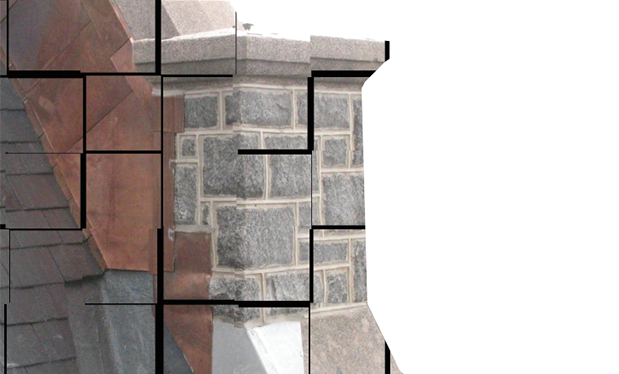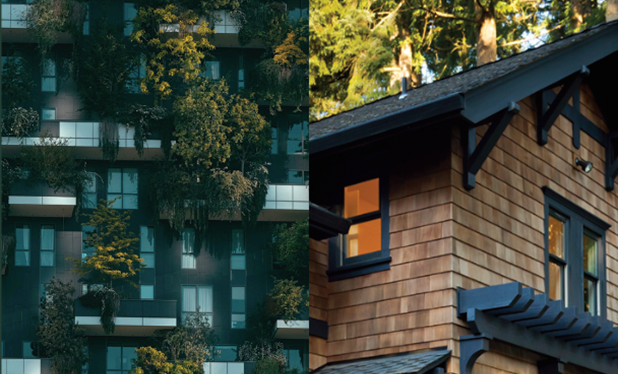Sustainability continues to remain a goal within the built environment; however, the construction community is starting to place a greater emphasis on resiliency as a part of sustainability for buildings and other structures. In fact, ARCHITECT magazine reported more than 30% of architectural firms expect projects designed using a sustainable rating system to increase during the next two years.
ASTM International is working to define resiliency within the work of Committee E60 on Sustainability and Committee E06 on Performance of Buildings. But until resiliency is specifically written into building codes, the design and construction communities have two sources for sustainability related to buildings: ASHRAE/ICC/USGBC/IES 189.1, “Standard for the Design of High-Performance Green Buildings,” and LEED.® The difference is the standard can be a mandatory requirement when adopted by a local jurisdiction, but LEED is a voluntary rating system.
Unpacking the code
Generally, sustainability requirements provide a whole-system approach to the design, construction and operation of buildings and include cost-effective measures that result in reduced operating costs, better indoor environments, reduced effects on natural resources, and improved neighborhood connections and walkability.
The International Green Construction Code®’s intent is to provide for the health, safety and life of the built environment; increase buildings’ economic and resource efficiencies; reduce the effects of climate change through more resilient buildings, communities and cities; and provide for the best modern buildings without compromising future generations’ needs.
Published by the International Code Council,® the 2021 edition of the IgCC is the code’s fourth edition and part of a family of comprehensive, coordinated and modern model codes, including the International Building Code,® International Residential Code® and International Energy Conservation Code,® along with 11 other I-Codes published by ICC. The 2021 IgCC is the second fully integrated edition developed collaboratively by ICC and ASHRAE Inc.
With the publication of the 2018 IgCC, ASHRAE/ICC/USGBC/IES 189.1 and the code essentially became one document. ICC is responsible for maintaining IgCC’s Chapter 1—Scope and Administration, and Chapters 2-11 and the appendixes are the responsibility of ASHRAE’s Standard 189.1 Committee.
ASHRAE published Standard 189.1-2020 in January 2021, which updated the standard’s 2017 version. In June 2021, ICC published the 2021 IgCC that incorporated ASHRAE 189.1-2020.
The IgCC is updated and modified every three years, which is the only time changes may be submitted for Chapter 1. Proposed revisions to Chapter 1 for the 2024 IgCC currently are being reviewed.
However, the technical portion of the code—Chapters 2-11 and the appendixes—is a continual maintenance document. This means these portions can be revised or updated any time. A proposed change to the standard may be submitted between standard publication dates. If approved, the change is published as an addendum that immediately can be adopted by a jurisdiction as a mandatory requirement. Then, at the next publication date, all approved addendums since the previous publication date automatically are incorporated into the updated published standard. As of July 2022, there have been 13 addenda published for ASHRAE 189.1-2020.
Roofing requirements
The IgCC is formatted using ICC’s code format and contains Chapters 1-11, Appendixes A-M and Annex 1. Appendixes are treated differently from other I-Codes’ appendixes, which are provided to offer optional criteria to the provisions in the main chapters of the specific I-Code. These are identified in two categories: normative appendixes (mandatory requirements) and informative appendixes, which provide additional information but are not mandatory provisions or part of the code.
The two appendixes related to roof assemblies are Appendix A (mandatory), “Prescriptive Building Envelope Tables,” and Appendix E (nonmandatory), “Building Envelope Tables,” which provides minimum R-values for nonresidential, residential and semiheated roof assemblies based on climate zone.
Chapter 5—Site Sustainability and Chapter 7—Energy Efficiency directly address roof system design and installation. Section 501.3.5.3 Roofs requires buildings and covered parking roof surfaces for building projects in climate zones 0 (not present in North America), 1, 2 and 3, 4A and 4B to have a minimum of 75% of the roof surface covered with products that have:
- A minimum three-year-aged solar reflectance index of 64 for roofs with slopes less than or equal to 2:12
- A minimum three-year-aged SRI of 25 for roofs with slopes more than 2:12
- There are four exceptions for Section 501.3.5.3 that depend on climate zone, whether an energy simulation is performed, a building’s space conditioning category and ballast criteria.
Areas to be excluded from the calculated required area include areas occupied by one or more of the following:
- Rooftop penetrations and associated equipment
- On-site renewable energy systems
- Portions of the roof used to capture heat for building energy technologies
- Roof decks and rooftop walkways
- IgCC-compliant vegetative terraces and roof systems
The required SRI is determined in accordance with ASTM E1980, “Standard Practice for Calculating Solar Reflectance Index of Horizontal and Low-Sloped Opaque Surfaces.”
The 2021 IgCC considers vegetative terraces and roof systems as containing plantings capable of surviving in the local microclimate, which includes but is not limited to precipitation, temperature and wind.
Similarly, the growing medium in which plants are to be placed also must support the plantings in the local microclimate. The installation of plantings also must meet the requirements of the roof covering manufacturer’s instructions and provide the intended coverage within two years of the issuance of the final certificate of occupancy.
The use of potable or reclaimed water to irrigate plantings is prohibited after the plants are established or 18 months after the initial installation of the plants, whichever is less. After 18 months or when the vegetation is established, the irrigation system for potable or reclaimed water must be removed unless the authority having jurisdiction approves the continued use of on-site reclaimed water for vegetative roof system irrigation.
In a related section in Chapter 10—Construction and Plans for Operation, roof surface materials selected to comply with the requirements of Section 501.3.5.3 must include maintenance procedures for keeping roof surfaces clean in accordance with manufacturers’ recommendations. In addition, the care needed to promote healthy plant growth and maintain roof membranes for vegetative terraces and roof systems, as well as replacement procedures of plantings, must be provided. The nonvegetated roof area borders and clearances must comply with provisions of the International Fire Code.®
To comply with IgCC Chapter 7, a project must meet specific mandatory requirements and either the prescriptive or performance option. Section 701.3.2 On-Site Renewable Energy Systems is a mandatory provision and requires (with three exceptions) a building project to contain on-site photovoltaic systems based on the horizontal projection of the gross roof area over conditioned and semiheated spaces. On a constrained building site, this could result in a PV system being installed on a roof.
Areas to be excluded from the gross roof area calculation are those that are shaded more than 1,500 annual hours between 8 a.m. and 4 p.m., areas of vegetative roof systems that comply with Chapter 5, areas for helipads and areas designated for public occupancy.
The minimum R-value for roof assemblies is contained in the prescriptive provisions of Section 701.4.2.1 Building Envelope Requirements, which references ASHRAE 90.1, “Energy Standard for Buildings Except Low-Rise Residential Buildings.” For climate zones 0, 1, 2 and 3, the minimum R-values and maximum U-factors are published in ASHRAE 90.1. In climate zones 4, 5, 6, 7 and 8, the values are increased as shown in Figure 1. These minimum R-values also are published in IgCC’s Appendix E and are not part of the code.
Additionally, Section 701.4.2.3 Single-Rafter Roof Insulation requires single-rafter roof systems (commonly referred to as cathedral ceiling roofs) comply with the requirements of Table A101.1 in Appendix A as shown in Figure 2. These requirements supersede those contained in ASHRAE 90.1.
However, Section 701.4.2.9 Building Envelope Trade-Off Option permits a trade-off based on improved performance of the building envelope for the proposed project over a theoretical base design if the requirements in Section 701.4.2 are incorporated into the proposed design of the building envelope (roof assembly).
The performance option provisions are contained in Section 701.5 and include the requirements in Appendix C for renewable, recoverable and purchased energy in addition to building performance calculations. There is one additional compliance path for meeting energy efficiency in the IgCC that is contained in Appendix H, which references the IECC prescriptive path. However, Appendix H is informative only (not part of the IgCC) unless specifically adopted by a local jurisdiction.
Chapter 8—Indoor Environmental Quality can indirectly affect roof assemblies. Section 801.4.1.1.1 Minimum Daylight Area requires 50% of a floor area to be in a daylight area. There are multiple ways to produce daylight area for a floor, including skylights, roof monitors and windows. Therefore, depending on a building’s dimensions, providing daylight through a roof assembly may be the option chosen to meet the daylighting requirement. In addition to daylighting, provisions in Chapter 8 include emissions and volatile organic compound requirements for materials, such as adhesives, sealants, coatings and other products. The 2021 IgCC only applies these requirements to products used on a building’s interior and not roofing work.
The mandatory provisions in Chapter 9—Materials and Resources will affect new roof system installations as well as roof system replacements. In Section 901.3.1.1 Diversion, a minimum of 50% of nonhazardous construction, demolition or deconstruction waste material must be diverted from disposal in landfills and incinerators by reuse, recycling, repurposing and/or composting. Not included in the calculation is excavated soil, land-clearing debris and waste-to-energy incineration. All diversion calculations must be based on weight throughout the construction process.
For new construction, Section 901.3.1.2 Total Waste states that before the issuance of a project’s final certificate of occupancy, the total amount of construction waste generated shall not exceed 20 pounds per square foot of new building floor area. This requirement applies to all waste whether diverted, landfilled, incinerated or otherwise disposed. In addition, excavated soil, land-clearing debris and demolition debris are not to be included in the calculation. The amount of waste must be tracked throughout the construction process in accordance with the construction waste management plan.
Before a demolition or building permit can be issued, Section 901.3.1.3-Construction Waste Management Plan requires a preconstruction waste management plan be available to the building owner and the authority having jurisdiction. The plan must:
- Identify the construction and demolition waste materials expected to be diverted
- Identify materials to be deconstructed
- Determine whether construction and demolition waste materials are to be source-separated or comingled
- Identify service providers and designate destination facilities for construction and demolition waste materials generated on the job site
- Identify the average diversion rate for facilities that accept or process comingled construction and demolition materials
- Identify the method of tracking
- Identify the reporting method for disposal of the above items
If Chapter 9’s prescriptive option is selected for compliance, a project is required to comply with any two of the following requirements:
- A minimum of 10% of all installed materials for the project, by cost, must contain recycled or salvaged content.
- A minimum of 15% of the products or materials, by cost, must be manufactured or extracted/harvested/recovered within a 500-mile radius of the project site.
- A minimum of 5% of the materials, by cost, must be biobased products.
- A third-party reviewed multi-attribute certification and an environmental product declaration for each product must be present.
Additional requirements in Chapter 10 include the commissioning and functional and performance testing of a building. Informative provisions of the commissioning process are contained in Appendix K. The commissioning process typically is performed by an independent third party to review design documents, installation of materials and systems, and verify performance or compliance testing with the project documents.
Looking ahead
According to ICC’s website, no state has adopted the 2021 IgCC. However, three states and the District of Columbia have adopted an earlier version of the IgCC or a locally developed green code. In addition, local jurisdictions in several states have adopted some form of green building code.
Protecting the environment continues to be a priority for many building owners. And it is important you stay abreast of recent changes to green building codes and standards to ensure you are installing roof systems appropriately.
Glen Clapper, AIA, LEED AP, is an NRCA director of technical services.



